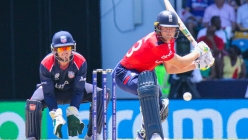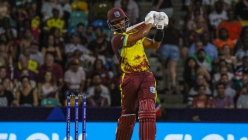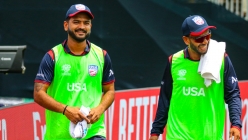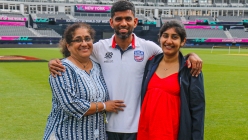USA Cricket: 2019 CWC League Two UAE Tri-Series Tour Report Card Part 3 – Outlook for 2020
2019 Dec 27 by DreamCricket USA
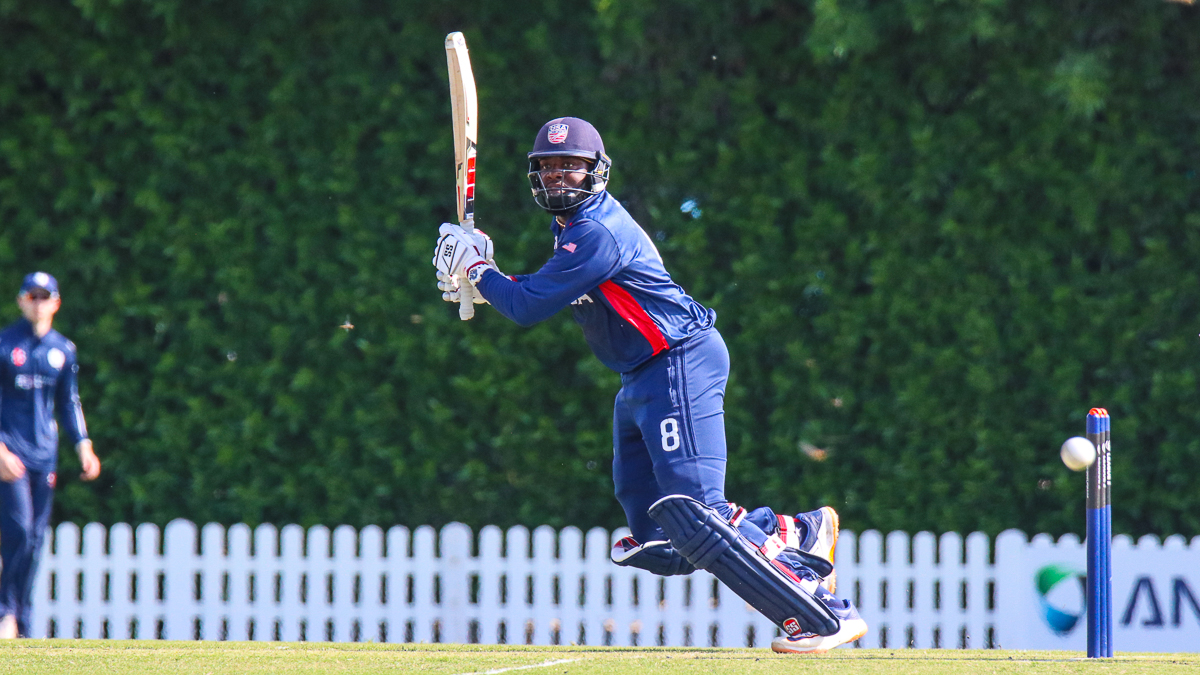
Photo credit: Peter Della Penna
Part 3 of DreamCricket's Tour Report Card review of the UAE Tri-Series presents an outlook for USA's strategies going forward in 2020.
By Peter Della Penna (Twitter @PeterDellaPenna)
1 - Define the roles of Timil Patel and Elmore Hutchinson going forward
Similar things have been written about Timil in the past after his struggles in North Carolina during the opening round of regional T20 World Cup Qualifying in September 2018. The facts are simple. Timil and Hutchinson are USA’s No. 1 and 2 leading wicket-takers all-time in 50-over cricket. They are also age 36 and 37. You do not bring players with that kind of track record on tour just to sit on the bench at that age. Either they play every match or there is no point in having them tour at all.
A good argument could be made for keeping them around if they were there to shepherd younger players and help ease the transitions for the next generation of USA players. However, USA’s “next generation” is currently made up of Rusty Theron, Cameron Stevenson and Ian Holland, players who are all new to the USA team but who have extensive records in first-class cricket overseas. They do not need anyone to shepherd them or offer them senior advice. If Theron needs an older teammate to tell him how to bowl, fans should be very worried.
The UAE tour, and the Super50 tour to Trinidad that preceded it, were golden opportunities to blood young talent and give them exposure to see what senior level international cricket is all about. In particular, the UAE tour was a tremendous wasted opportunity when contrasted with how the UAE approached the tri-series, giving debuts to a 21-year-old (Darius D’Silva) and three teenagers: Vriitya Aravind, Karthik Meiyappan and Jonathan Figy. In the long run, UAE’s selection strategy promises far greater dividends for the development of UAE’s up and coming talent by the end of CWC League Two in 2022.
At the very least, USA Cricket could have picked two recent USA U-19 players to be part of the 14-man squad if there was no intention of ever utilizing the bench barring injury. Just being in the team training and match day environment would have given a decent picture of where the players need to improve.
Nobody should begrudge USA Cricket for wanting to pick the best XI possible players in an effort to win. But if USA Cricket’s mission is to take the sport mainstream, then at some point locally developed players have to be given opportunities or else the sport will continue to remain sheltered and claims of exploiting the sizable American commercial market will remain laughable because at the moment that market is entirely dependent upon India coming to play matches on US soil and has nothing to do with legitimate interest in the American cricket community, if USA Cricket’s paid membership base is anything to go by.
2 - Restart a national tournament in 2020. No, really restart it.
USA Cricket and/or the caretaker administration run by the ICC’s Project USA have been promising since 2015 to restart the national tournament. Five years of promises have resulted in no action. This writer has been an advocate for the combines that were run by the ICC/USA Cricket to identify players around the country because there were clearly players who had fallen through the cracks of the previous national tournament structure who were not being identified to be put on the pathway to play for USA. That goes for cricket or any combine in any other sport such as football or basketball.
However, there is still an undeniable inherent value in tournament play to help identify players who respond differently to the psychological pressure of actual match play vs. simulated training environments in a combine. In an ideal world, there would be a symbiotic relationship between the two. But at the very least, a national tournament needs to happen.
According to several people around the USA national team setup, the lack of a national tournament has resulted in a level of complacency among some players in the current national squad who do not feel pressure for their spots. As such, the performances of a player such as Steven Taylor have turned increasingly mediocre. Taylor lost his CPL and Jamaica Scorpions contracts when he faced competitive pressure which he has not felt playing for USA. But a national tournament structure would go some way towards rectifying that if there was undeniable evidence that players are outperforming him on the field in a clearly defined domestic structure.
The main reason why players and coaches around the country lost faith in the combine structure in 2018 was because the combines were emphasized by administrators as a mandatory pathway in order to be in contention for selection to play for USA. That was then subverted with the selection of Hayden Walsh Jr. and Aaron Jones for the tour of WCL Division Three in Oman.
Regardless of the quality of both Walsh Jr. and Jones, and USA’s successful ascent to ODI status in the wake of their selection, that maneuver was in a way a pyrrhic victory because of the erosion it has had on support for local development. Instead of the selection of Jones and Walsh Jr. being a one-off to get USA over the top into ODI status, it has opened up a can of worms in which the lid shows no signs of being resealed. Karima Gore and Cameron Stevenson have undeniably been valued contributors to many USA victories in the last nine months. But that selection philosophy which mined them is unsustainable for a healthy and robust domestic structure.
Nobody really has a genuine idea of the domestic talent cupboard is currently bare because that cupboard has never truly been opened in the last several years. For all of USACA's faults, at least they can lay claim to the fact that the USACA administration gave senior team debuts to USA U-19 graduates such as Steven Taylor, Akeem Dodson, Abhimanyu Rajp, Ryan Corns, Hammad Shahid, Ravi Timbawala, Muhammad Ghous and Fahad Babar, who have all made fruitful contributions to the national team at various stages of their careers.
For all of the praise heaped on Pubudu Dassanayake and his administrative support team during the Project USA/USA Cricket era, he did little to nothing when it came to giving opportunities to recent USA U-19 players. Essentially the only one to make a debut in the post-USACA era since June 2015 was Sagar Patel, a selection which not only hasn't panned out but has also at times stirred up murmurs regarding a potential conflict of interest from a member of the selection panel. That imbalance in opportunities given to USA U-19 graduates from the USACA era vs. the post-USACA era is an indictment of USA Cricket's attitude toward local development, especially considering all the lofty claims by the administration regarding talent identification structures being conducted in a more professional manner.
USA Cricket has claimed that it will be starting a “Minor League” for 2020, as well as some sort of a domestic tournament separate from that, as evidence that there will truly be a pathway established for players to be identified and encouraged to pursue higher honors playing for USA. The onus is on players and league administrators around the country to keep pressure on the USA Cricket administration to uphold that promise. If the promise is not upheld, voting booth (if the election timelines are maintained) offers a check and balance.
ICYMI - Part 1: Team Grades, and Part 2: Player Grades.
[Views expressed in this article are those of the author, who was present at all of the team's matches on tour in the UAE, and do not necessarily represent the views of DreamCricket management. If you have different views or opinions, we respect those views and urge you to provide your feedback, both positive and negative. Feel free to respond to the author via Twitter @PeterDellaPenna.]
